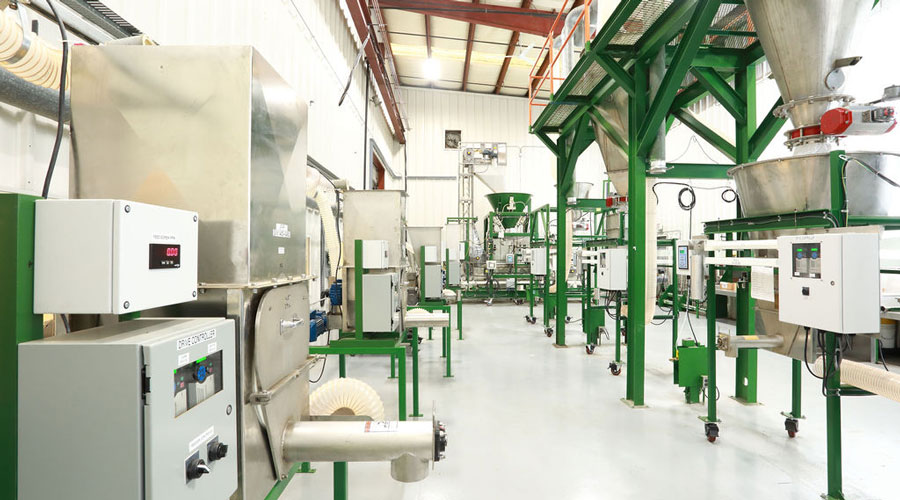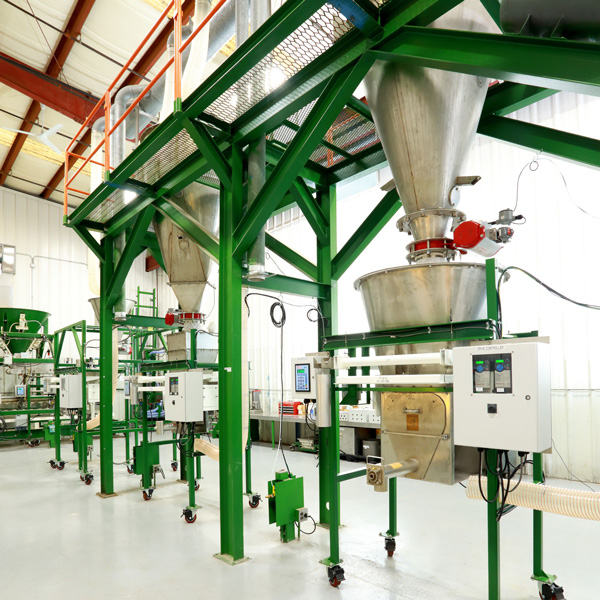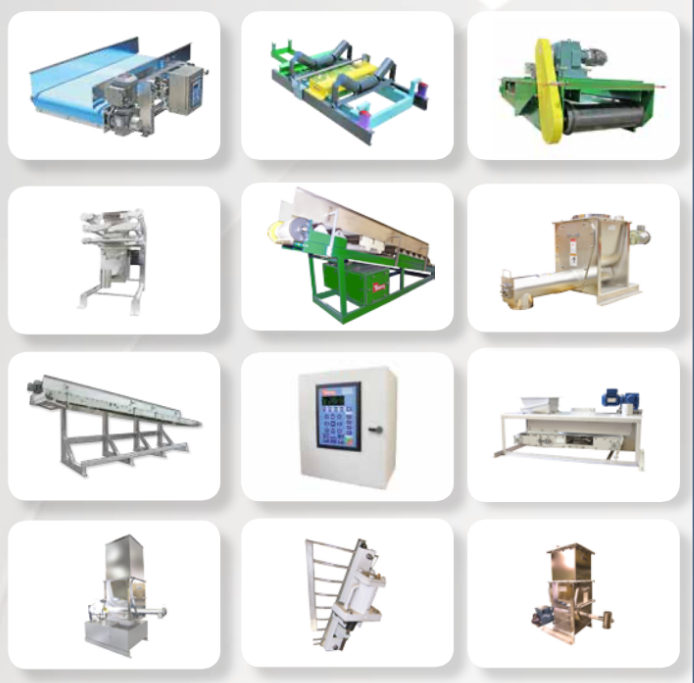Thayer Scale Testing
A snack food manufacturer visits test center to help select new feed bin and feeder.
Hain Celestial Group, a food and personal product manufacturer based in Lake Success, NY, creates a wide range of products across its 30 plants worldwide. At one of the facilities, the company manufactures a vegetable-based snack food and was encountering a variety of flow issues during the production process.
To create the snack food (using snack food processing equipment), Hain blends raw ingredients together to create a base material that’s moved into a feed bin. The blended material is fried and then seasoned with ingredients that are fed from separate bins.
“Our old feed bin wouldn’t allow one base material to flow reliably,” says Jeffrey Bailor, technology man- ager for Hain. “The material would bridge terribly, and operators would have to intervene with rods and hammers to get the material to flow. Additionally, because of the operator intervention, we had a lot of material breakage.”
Trying out testing material flow equipment
To figure out a solution to the material flow issues, the company brought its base material, as well as two new seasonings that Hain hadn’t worked with before, to Thayer Scale’s Material Testing Center. Thayer Scale, Pembroke, MA, is a supplier and manufacturer of bulk solids flow control and feeding equipment.
The supplier has an 1,800- square-foot test center that was overhauled in 2019. The facility features volumetric screw feeders, loss-in-weight screw feeders, loss- in-weight vibratory feeders, weigh-belt feeders, large-volume supply hoppers, an outdoor conveyor belt with belt scales, and other equipment. All of the equipment can be rearranged and modified to create a suitable test environment to match the customer’s application.
At the test center, Hain was searching for a solution to the bridging problem for its base material.
“The base material shingled and bridged terribly in our existing supply hopper,” Bailor says. “The shingling occurred because the base material was flat and layered on top of each other, preventing consistent flow.”
The company also needed to find a new seasoning feeder. Hain was looking for a single unit that had enough flexibility to feed multiple seasonings with different flowability properties at a wide range of throughput. The old seasoning feeders weren’t capable of achieving the low and high feed-rates that were required by the two new test seasonings.

The supplier’s newly renovated test center has a wide range of conveying and feeding equipment that can be arranged to mimic the customer’s application.
Finding a proven solution
For the two new materials that were tested, Hain wanted to evaluate a feeder with a wide flowrate range. Testing showed that one material had a feedrate of 1 lb/hr while another material’s feedrate exceeded 200 lb/hr.
“We sent our materials to the test center prior to arriving. When we arrived, the equipment was set up and ready to run. We defined the test criteria and watched our own material run on the equipment,” Bailor says. “It was a very efficient visit, and we left feeling confident that the new equipment would meet our needs.”

LIW Gravimetric Feeders with mezzanine level supported supply hoppers
At the test center, Hain was able to monitor testing of an MSF volumetric screw feeder, which proved it could handle the challenges presented by the two new materials. In testing, the feeder demonstrated a consistent volumetric feed of both materials with little variability and that it’s easy to empty and clean between batches thanks to its simple disassembly. The supplier also suggested an additional smaller feed screw to help handle the required feedrate range.
To prevent the material from bridging in the bin feeder, the supplier tested the material in two different bins with different outlet diameters and no bin agitation. Both of these options experienced poor flowability. To improve flow consistency, the supplier used a feed bin attached with a Spiralator, a vertical lifting agitator that gently and continuously lifts the material closest to the bin’s wall to aid in material flow. Testing showed this setup could provide reliable flow of the fragile base material with negligible material damage.
“For the raw feed bin, we’re able to feed material without operator intervention. Additionally, we improved breakage of the raw material by 50 percent,” Bailor says. “For the seasoning feeder, we now have a unit that is flexible enough to run any new seasoning at a wide range of throughputs.” PBE
For further reading
Find more information on this topic in articles listed under “Feeders” and “Flow aids” in Powder and Bulk Engineering’s article index in the December 2019 issue or the article archive on PBE’s website, www.powderbulk.com.
Copyright © CSC Publishing
Article appeared in March 2020 issue of PBE.


